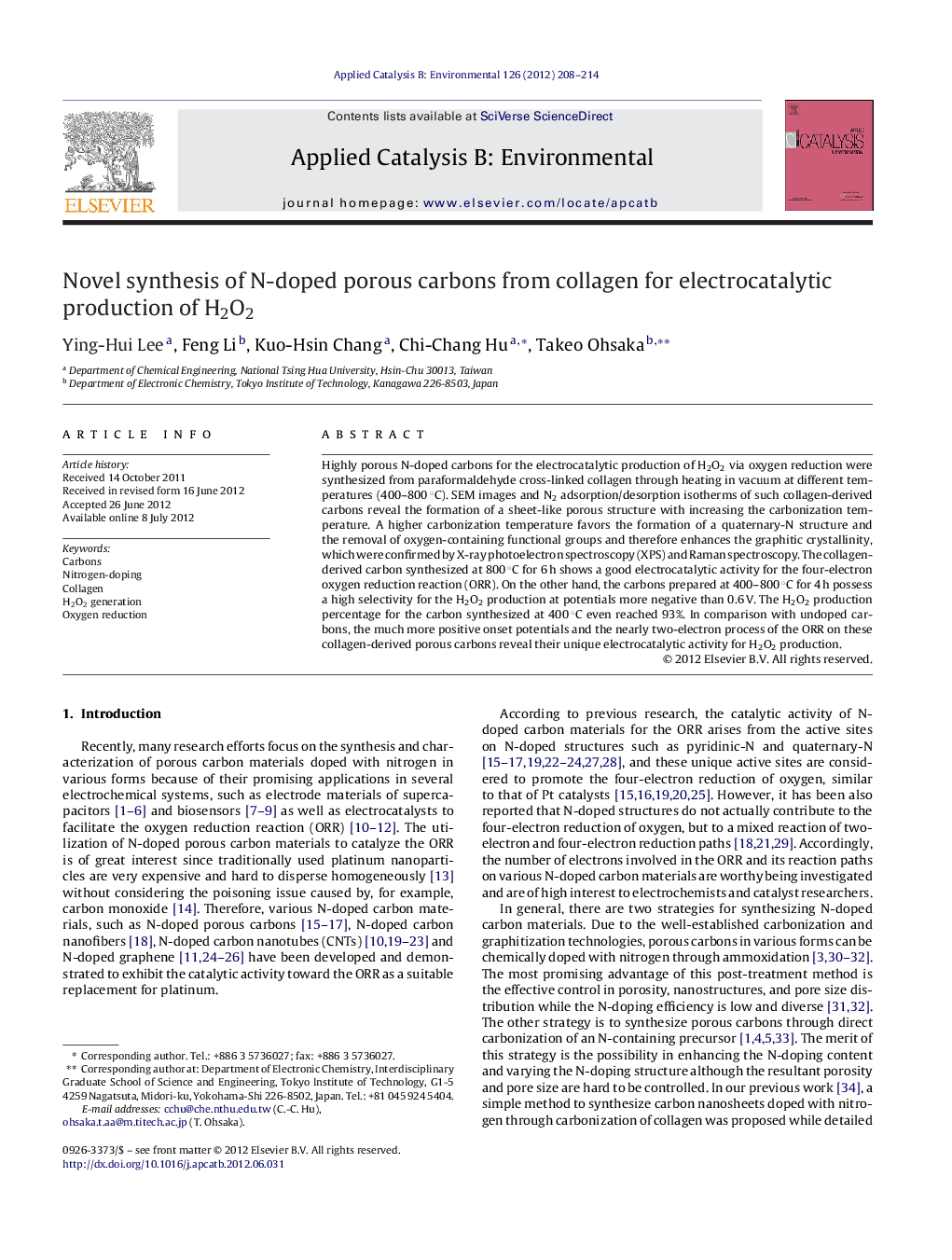| Article ID | Journal | Published Year | Pages | File Type |
|---|---|---|---|---|
| 46545 | Applied Catalysis B: Environmental | 2012 | 7 Pages |
Highly porous N-doped carbons for the electrocatalytic production of H2O2 via oxygen reduction were synthesized from paraformaldehyde cross-linked collagen through heating in vacuum at different temperatures (400–800 °C). SEM images and N2 adsorption/desorption isotherms of such collagen-derived carbons reveal the formation of a sheet-like porous structure with increasing the carbonization temperature. A higher carbonization temperature favors the formation of a quaternary-N structure and the removal of oxygen-containing functional groups and therefore enhances the graphitic crystallinity, which were confirmed by X-ray photoelectron spectroscopy (XPS) and Raman spectroscopy. The collagen-derived carbon synthesized at 800 °C for 6 h shows a good electrocatalytic activity for the four-electron oxygen reduction reaction (ORR). On the other hand, the carbons prepared at 400–800 °C for 4 h possess a high selectivity for the H2O2 production at potentials more negative than 0.6 V. The H2O2 production percentage for the carbon synthesized at 400 °C even reached 93%. In comparison with undoped carbons, the much more positive onset potentials and the nearly two-electron process of the ORR on these collagen-derived porous carbons reveal their unique electrocatalytic activity for H2O2 production.
Graphical abstractThe collagen-derived carbon synthesized at 800 °C for 6 h (i.e., CG 800-6) shows a good electrocatalytic activity for the four-electron oxygen reduction reaction (ORR). On the other hand, the carbons prepared at 400–800 °C for 4 h (i.e., CG400, CG600, CG800) possess a high selectivity for the H2O2 production at potentials more negative to 0.6 V through a near constant two-electron transfer reaction. The H2O2 production percentage for the carbon synthesized at 400 °C reached even 93%. In comparison with the undoped carbon (i.e., SWCNT), the much more positive onset potential and the nearly two-electron process of the ORR on these collagen-derived porous carbons reveal their unique electrocatalytic activity for H2O2 production. Figure optionsDownload full-size imageDownload as PowerPoint slideHighlights▸ N-doped carbons from collagen were developed for either two-electron or four-electron transfer reaction of ORR. ▸ The N-doped carbon (i.e., CG800-6) shows a good electrocatalytic activity for the four-electron ORR. ▸ The N-doped carbons (i.e., CG400, CG600, CG800) show an excellent electrocatalytic activity for H2O2 production. ▸ The efficiency of H2O2 production is higher than 80% over a wide potential range of ca. 0.17–0.6 V (vs. RHE).
